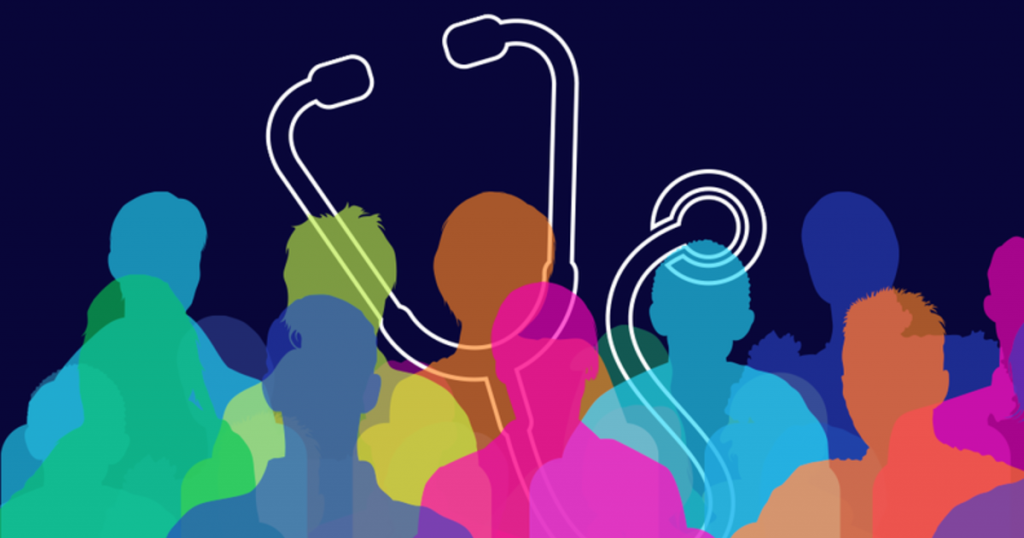How a patient identifies across racial and ethnic lines can be a greater indicator of their health than their insurance status, a new study suggests.
Health inequities and access issues exist among individuals who receive health insurance through their employer, despite arguments that access to commercial insurance acts as a great equalizer among patients, according to a study published Monday by NORC at the University of Chicago.
The report was sponsored by Morgan Health, JPMorgan Chase & Co.’s initiative aimed at reforming the job-based health insurance market. The findings indicate that socioeconomic differences are not the only factor driving disparate health outcomes among different racial and ethnic groups, said Caroline Pearson, the study’s author and a senior vice president of healthcare strategy at NORC, a social research organization.
“When you do research and report results on race and ethnicity, inevitably someone says, ‘How much of this is accounted for by income differences?'” Pearson said. “One of the things that was really exciting about our study was that we were able to control for differences in age, gender, income, and by race and ethnic group. Health disparities persist even after those adjustments. It really suggests that health disparities are deeply rooted in our healthcare system.”
Researchers analyzed self-reported data from people enrolled in their employer’s health plan from 2017 to 2019. They reviewed information that 12,372 patients reported to the federal National Health Interview Survey; 3,103 individuals reported to the federal National Health and Nutrition Examination Survey; and 14,580 reported to the federal National Survey of Drug Use and Health.
The research found Black, Asian and Hispanic respondents with low-risk pregnancies were at least 3 percentage points more likely to undergo a Cesarean section than their white counterparts. C-sections pose a greater risk of maternal morbidity and mortality than vaginal delivery for low-risk pregnanices, and are associated with a greater risk of infection, longer hospital stays and hospital readmissions, according to the American College of Obstetricians and Gynecologists. Twenty percent of Black respondents, 17.7% of Asian respondents and 17% of Hispanic patients with low-risk deliveries had them performed via C-section, compared with 13.6% of white respondents.
“These are people that are connected to the healthcare system, and they all have low-risk pregnancies,” Pearson said. “Why are we performing C-sections at much higher rates in people of color? We should not be.”
Lesbian, gay and bisexual individuals reported levels of serious psychological distress, anxiety and depression higher than people who were heterosexual, the study said. More than 23% of LGBTQ individuals said they experienced serious psychological distress, compared with 8.8% of heterosexual patients who reported that condition, according to the report.
White respondents of all genders and sexual orientations were more likely than Black, Hispanic and Asian members to experience serious psychological distress, according to the report.
Across populations, 30% of individuals reported heavy alcohol use, 18.8% said they used illicit drugs such as cocaine and 19.8% used tobacco products. White and Hispanic respondents reported the highest levels of heavy alcohol use, at 31.7% and 33.2%, respectively. Nearly 21% of white patients reported using illicit drugs, compared with 16.4% of Black individuals, 16.6% of Hispanic individuals and 8.9% of Asian individuals, according to the report.
Rates of chronic conditions also varied among Black, Asian, Hispanic and white patients.
Asian, Hispanic and Black individuals were more likely to have diabetes than white people, the study found. Black people were also more likely to have higher, uncontrolled blood pressure than white individuals.
While almost all respondents reported having a usual source of care, the study showed differences in how often different racial, ethnic and income groups used the emergency department. Study authors pointed to emergency department use as an indicator for reliable access to care.
Black patients were more likely and Asian individuals were less likely to visit an emergency room than white people, researchers said. Individuals in the lowest income bracket earning less than $50,000 a year were 7.1 percentage points more likely to have visited an emergency department than people in the highest income bracket earning at least $150,000.
“The working poor in this country still face a lot of challenges in food security, and paying for medical bills relative to other costs, etc.,” Pearson said. “That’s hard data for employers to digest.”
The findings create a national benchmark employers can use to figure out how the health of their workers compares with the national average, Pearson said. From there, companies must reflect on how to design health and wellness benefits to address the health disparities, she said.
“They should think about what are the actual things that are driving the disparities in this study, as opposed to just paying for them,”Pearson said.
